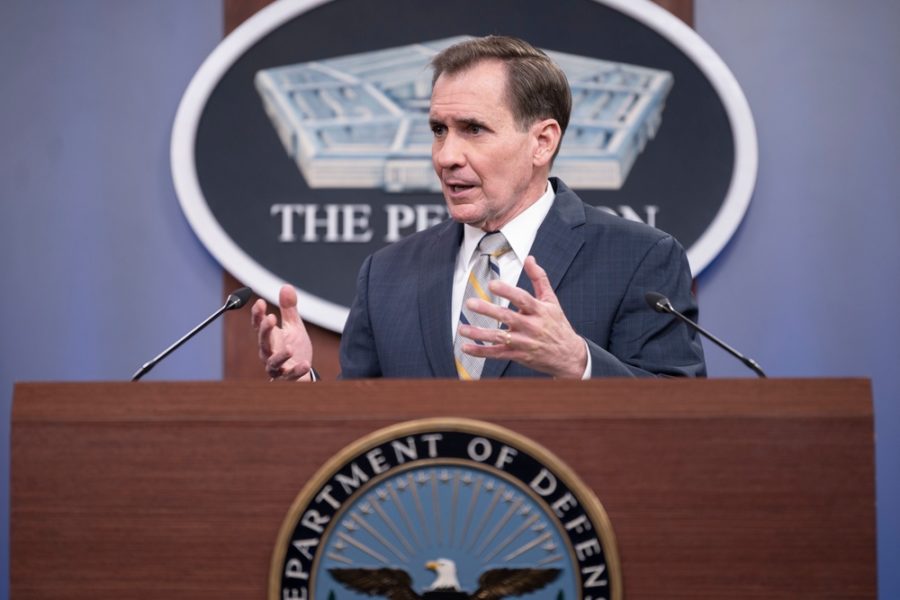The Defense Department has already told 8,500 troops to prepare to deploy for a potential Ukraine contingency within five days. But even more American service members could soon be deployed to eastern Europe, either from the U.S. or from within the continent, Pentagon Press Secretary John F. Kirby confirmed Jan. 31.
Kirby’s comments came as clarification after President Joe Biden told reporters on Jan. 28 that he would be “moving troops to Eastern Europe and the NATO countries in the near term—not a lot.”
While Kirby refused to say how many troops could be deployed or where they might go, he did say that they would be separate from the 8,500 figure previously announced. Those troops, who have not actually been deployed yet, would be the U.S. contribution to a 40,000-member NATO Response Force, which requires consensus within the alliance to activate.
“The 8,500 troops that we talked about last week are part of our contribution to the NRF. The NRF has not been activated,” Kirby said. “What the President was talking about was the potential for additional U.S. troops to bolster the capabilities of some of our eastern flank NATO allies.”
Those troops, Kirby added, would be moved under a bilateral agreement between the U.S. and whatever country hosts them.
“You can’t just unilaterally decide to throw extra U.S. forces at a country. You want to make sure that they’re on board with it, and that you’ve had the appropriate conversations,” said Kirby. “And what I would tell you is that those sorts of conversations are ongoing.”
When asked for a rough estimate of how many troops might be deployed, Kirby declined, saying, “it would be inappropriate for me, since we are in active discussions with allies, to ballpark it right now.”
NATO allies in Eastern Europe and along the Black Sea have been publicly pushing for an increased U.S. presence in their countries, as Russia continues to mass forces along the Ukrainian border, fomenting fears of a potential invasion that would upend security in the region. Estonian Prime Minister Kaja Kallas, Lithuanian Prime Minister Ingrida Šimonytė, and Romanian President Klaus Iohannis have all indicated a willingness to host more troops in the past few months.
“When it comes to bilateral agreements or arrangements with NATO allies, if they need additional capabilities, if they would want that, then we would work it out individually with each nation to make sure that we’re meeting the need as best they desire and can accommodate,” Kirby said.
Any troops deployed to the region would be under the command of Air Force Gen. Tod D. Wolters, who serves as both head of U.S. European Command and NATO’s Supreme Allied Commander Europe.
But Kirby indicated that some of the troops deployed to eastern flank allies might already be in Europe underneath Wolters’ command.
“An option available to us is to use U.S. forces that are already in the European theater. You don’t necessarily have to flow in forces from the States or from even other theaters,” Kirby said. “We have tens of thousands of U.S. troops on European soils, both in a permanently based environment, as well as on rotational orders. And so we’re taking a look at the whole menu of opportunities available here and units available.”
There are also already U.S. forces who have deployed to eastern European nations in recent weeks. On Jan. 26, half a dozen USAF F-15Es landed in Estonia to aid NATO’s enhanced air policing mission, and on Jan. 4, F-16s from Spangdahlem Air Base, Germany, deployed to fly with Polish F-16s in Lithuania and with Belgian F-16s in Estonia, also as part of the air policing mission.

